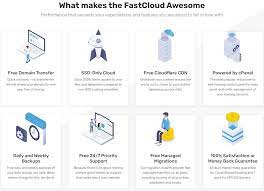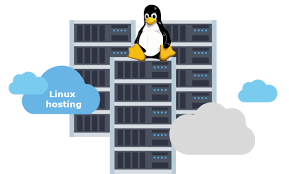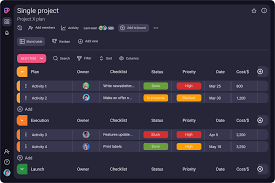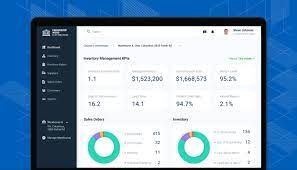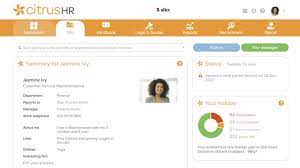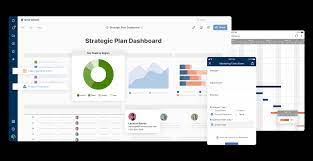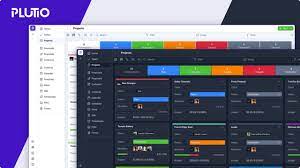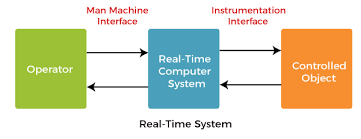Top Picks for the Best Linux Hosting Solutions in the UK
The Power of Linux Hosting
Linux hosting has become a popular choice for individuals and businesses looking for a reliable, secure, and cost-effective hosting solution. With its open-source nature, Linux offers unparalleled flexibility and customization options that cater to a wide range of hosting needs.
Benefits of Linux Hosting
There are several key advantages to choosing Linux hosting:
- Cost-Effective: Linux is free to use and distribute, making it an affordable option for hosting providers. This cost savings is often passed on to customers in the form of competitive pricing.
- Security: Linux is renowned for its robust security features, making it a secure choice for hosting sensitive data and websites.
- Reliability: Linux servers are known for their stability and uptime, ensuring that your website remains accessible to visitors at all times.
- Customization: With a wide range of open-source software available, Linux hosting allows users to customize their server environment to suit their specific needs.
Top Features to Look for in Linux Hosting
When choosing a Linux hosting provider, consider the following features:
- CPanel or Plesk Control Panel: A user-friendly control panel makes managing your website and server settings easy.
- SSD Storage: Solid-state drives offer faster data retrieval speeds compared to traditional hard drives.
- 24/7 Support: Look for a hosting provider that offers round-the-clock customer support to assist you with any technical issues.
- Data Backup Services: Regular backups ensure that your data is safe in case of unexpected events.
The Best Linux Hosting Providers
There are many reputable hosting providers that offer top-notch Linux hosting services. Some popular choices include:
No matter your hosting needs, Linux hosting provides a reliable and flexible solution that can scale with your business growth. Harness the power of open source with Linux hosting today!
Six Essential Tips for Selecting the Ideal Linux Hosting Service for Your Website
- Choose a reputable hosting provider with good customer reviews.
- Consider the specific needs of your website and choose a hosting plan accordingly.
- Ensure that the hosting provider offers reliable uptime and fast server speeds.
- Check if the hosting package includes features like SSL certificates, backups, and technical support.
- Look for hosting providers that offer scalable options in case your website grows in the future.
- Compare pricing plans to find a balance between cost and quality of service.
Choose a reputable hosting provider with good customer reviews.
When selecting the best Linux hosting provider, it is crucial to opt for a reputable company with positive customer reviews. By choosing a hosting provider with a strong reputation and satisfied customers, you can ensure reliable service, excellent support, and a smooth hosting experience. Customer reviews offer valuable insights into the quality of service provided by the hosting company, helping you make an informed decision that aligns with your hosting needs and expectations.
Consider the specific needs of your website and choose a hosting plan accordingly.
When selecting the best Linux hosting for your website, it is essential to consider the specific requirements of your site and opt for a hosting plan that aligns with those needs. Whether you anticipate high traffic volumes, require advanced security features, or need specific software compatibility, tailoring your hosting plan to accommodate these factors can ensure optimal performance and user experience. By assessing your website’s unique demands and selecting a Linux hosting plan that caters to them, you can maximise the efficiency and effectiveness of your online presence.
Ensure that the hosting provider offers reliable uptime and fast server speeds.
When selecting the best Linux hosting provider, it is crucial to ensure that they offer reliable uptime and fast server speeds. A hosting provider with high uptime guarantees that your website remains accessible to visitors without interruptions, enhancing user experience and credibility. Fast server speeds are essential for quick loading times, improving website performance and search engine rankings. By prioritising uptime and speed in your hosting provider selection, you can ensure a seamless online presence for your website users.
Check if the hosting package includes features like SSL certificates, backups, and technical support.
When considering the best Linux hosting provider for your website, it is essential to check if the hosting package includes crucial features such as SSL certificates, backups, and technical support. SSL certificates ensure secure data transmission and build trust with visitors, while regular backups protect your data in case of emergencies. Additionally, reliable technical support is invaluable for troubleshooting issues promptly. By verifying that these features are included in your hosting package, you can ensure a seamless and secure hosting experience for your website.
Look for hosting providers that offer scalable options in case your website grows in the future.
When considering the best Linux hosting option for your website, it is essential to look for hosting providers that offer scalable solutions to accommodate potential growth in the future. Scalability ensures that as your website expands and attracts more traffic, your hosting plan can easily adjust to meet increased demands without compromising performance or user experience. By choosing a hosting provider that offers scalable options, you can future-proof your website and ensure seamless operation as your online presence evolves.
Compare pricing plans to find a balance between cost and quality of service.
When selecting the best Linux hosting provider, it is essential to compare pricing plans to strike a balance between cost and quality of service. By evaluating different pricing options, customers can assess the features offered by each plan against its cost, ensuring they get the most value for their investment. Finding this equilibrium between affordability and service quality is crucial in making an informed decision that meets both budgetary constraints and hosting requirements effectively.



